Groodle Dog Breed Temperament, Diet and Training
Please welcome a gentle, intelligent giant. The Groodle is in your house.
If you are looking for a large but demure dog, your search is over. The Groodle fits these requirements. Family members who have allergies needn’t worry as this friendly fellow doesn’t shed.
Looking after the Groodle is an effort, but it comes with endless rewards. Here is what you need to know to make it a valuable addition to your family.
1. What is the Groodle or Goldendoodle?

The Groodle is a crossbred dog, specifically a blend of the Poodle and the Golden Retriever. It got its name because of the alteration of ‘Poodle’ to ‘Doodle.’ This crossbreed is relatively new, having come about only in the 1990s.
Most Groodles are first-generation hybrid dogs(crosses of two pure breeds). As such, they tend to be healthier than their parents.
Groodles vary widely in appearance. Their coats may look different, depending on which of their parents they take after. They may have various eye colors as well. We explain more about this in the section on their appearance.
2. Groodle history
Since the Groodle is a relatively new breed, its history is limited. However, its parents are pure breeds with long, and exciting stories to tell.
a. The Golden Retriever
This large-sized dog was a gun dog, which is surprising because of its gentle nature. It helped hunters locate and retrieve game. Gamers valued it because it had a soft mouth and could hold hunted animals without damaging them.
This friendly giant came from Scotland in the 19th century. Hunters wanted a retriever that could fetch game efficiently; none of those that were available were up to the task. The retriever excelled at fetching catches on land and in the water. A competent swimmer, it could access ponds and rivers.
Owing to this demand, breeders began to cross spaniels with existing retrievers. Dudley Majoribanks first developed the Goldie at his residence near Glen Affric in Scotland. He kept records of a detailed breeding program.
With more improvements in hunting came the necessity of having to retrieve game over harsh terrain. Although hunters were killing more birds, they were losing them as well. There was a need for a specialized retriever. Breeding began in earnest.
The first Golden Retrievers were the result of a cross between a yellow-colored retriever, Nous, and a Tweed Water Spaniel, Belle. Majoribanks began to develop a sophisticated breeding program that included the Irish Setter, the St. John’s Water Dog, and the sandy bloodhound. He wanted the ultimate hunting dog which would be more powerful and efficient than other retrievers.
The Goldie became increasingly well- received. The Kennel Club of England registered it in 1903 and began showing it in 1908. It officially recognized the Goldie in 1911. The American Kennel Club acknowledged it in 1925, and the Golden Retriever Club of Ontario came into being in 1958.
Famous Golden Retrievers include Liberty, which belonged to the American President Gerald R.Ford. A female Golden Retriever, Goldie, appeared on the BBC One program, Blue Peter. Monty Don, who presents the BBC Two gardening program, Gardener’s World, also has a Golden Retriever.
b. The Poodle
The Groodle’s other parent, the intelligent and elegant Poodle, also has a long history, which many pet historians dispute. The UK Kennel Club asserts that it comes from Germany and the American Kennel Club says that it has French origins.
Most people think of the Poodle as being a pampered lap dog, which it isn’t. They probably have this impression because of its near-perfect haircut. It is, in fact, a working dog that Hunters valued because it could swim.
This charming fellow was a duck hunter in Germany. The name, Poodle, originates from the German Pudel, which means ‘splash.’ It coincides with the English word, puddle. Since it served as a duck hunter, the French called it Caniche, from Cane, the female word for duck.
The Fédération Cynologique Internationale, which most German and French kennel clubs are members of, states that it descends from the French Barbet. To avoid disputes, the club’s German members acknowledged it as being from France. The French claimed it as their national dog.
The Europeans were familiar with this dog long before it arrived in America. German artist Albrecht Durer captured it in his drawings, as did renowned Spanish artist Francisco Goya.
It’s not surprising that the second cleverest, and possibly most handsome dog in the world has contributed too many dog breeds. Breeders have bred it in Toy, Standard, and Miniature sizes. The British Kennel Club recognizes them all. The Fédération Cynologique Internationale adds another, the medium Poodle.
Working dogs were of the standard variety, while miniature poodles served in circuses and as truffle hunters. Don’t let their well-groomed coats fool you – these dogs have incredible reflexes. They have excelled in agility, sporting, and obedience competitions.
c. The Groodle
The Groodle itself has some history, although it is short when compared with its parents’.
Monica Dickens first bred it in 1969. It didn’t gain popularity until the 1990s when breeders in North America and Australia started blending Golden Retrievers and Standard Poodles. They intended to develop a hypoallergenic guide dog.
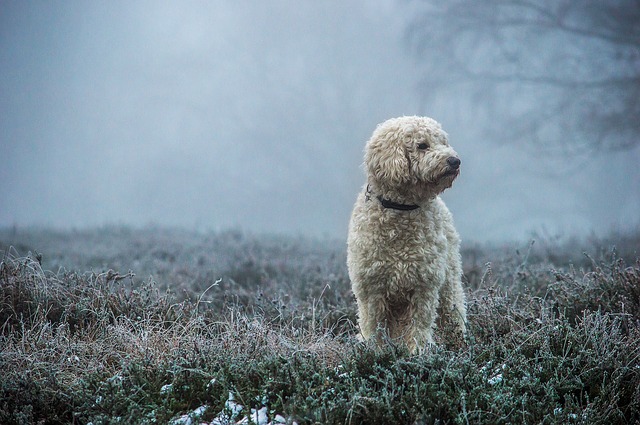
This fellow is what breeders called a designer dog. The term came about because breeders wanted to mix the favorable characteristics of the Poodle with those of other breeds.
3. Choosing a Groodle
A dog is a family member, so welcoming the right one into your home is crucial. If you haven’t owned one before, you could use a little advice. Here’s how to choose the perfect Groodle for you.
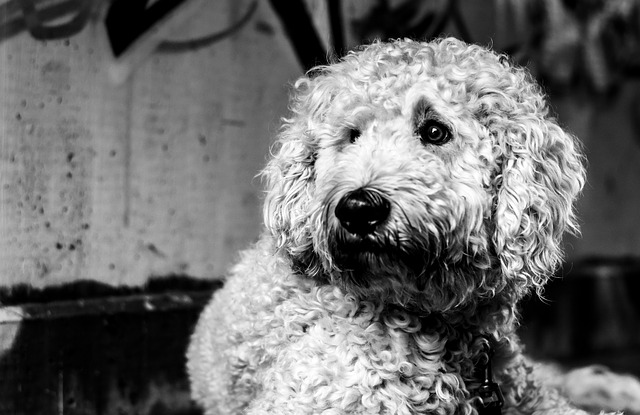
a. Interact with the puppies
First of all, meet the Groodle’s littermates. How it behaves when it’s with them will give you insight into it\’s personality (or dogsanality).
If the puppy that you’re interested in is dominant, it will rush to get its share of its mother’s milk. If it is submissive, it will wait for others to have their turns. Choose a puppy that complements your personality.
b. Meet the Parents
Then, it’s time for a doggy Meet-the-Parents session. You’ll have to give the Groodle’s parents a report card.
Find out if they have genetic disorders. The puppy may have inherited them. We will discuss these in the section on the Groodle’s health.
c. Consider the breed
The Groodle is generally a large dog because of its Retriever heritage. It does well in apartments, but it still needs sufficient space. Don’t get it if you are looking for an aggressive watchdog because it has a calm temperament.
d. Time
Taking care of a puppy requires effort, and a busy lifestyle may make this problematic.
Ideally, a family member, whose workplace is near home, should return to look after it during his or her lunch hour. If this arrangement is impossible, look for a reliable dog sitter in your area.
e. Know the Groodle
The best way to guarantee that you select the right Groodle is to get as much information as possible.
There are three types of Groodle dogs. First generation Groodles(F1s) are the offspring of purebred Poodles and Golden Retrievers.
Then there are F1B Groodle dogs. They are The children of an F1 Groodle and a Poodle. They are 25% Golden Retriever and 75% Poodle.
You may think that all Groodles are large, but this isn’t true. They come in a few sizes. Large ones are between 20 and mule 24 inches tall. Miniatures stand between 11 and 15 inches. Toy Grooodles are less than 10 in tall.
f. Lifestyle
If you are sedentary, you won’t want a dog that demands exercise. The Groodle needs lots of physical stimulation and isn’t a lapdog.
g. Budget
Pet owners will tell you that dog food is costly. At times, it may be more expensive than our own. Consider if you are willing to pay for it and substantial veterinary bills as well.
h. Emotional expectations
It’s not realistic to demand that your pet responds to you the way of human being would. There’s no doubt that dogs understand human emotions. However, if you expect your Groodle to process all instructions at once, you may have set your expectations too high.
i. A puppy or a senior pet
It’s old news that puppies need more time to house train than older dogs. Furthermore, old dogs more sedentary and will suit you if you have a slower-paced lifestyle. Have these considerations in mind when buying a Groodle.
4. Groodle appearance
The appearance of the Groodle can vary enormously from one dog to another because it is a hybrid. Furthermore, F1, F1B, and F2 Groodles may look completely different. It develops a more consistent look as remove away from the initial cross.
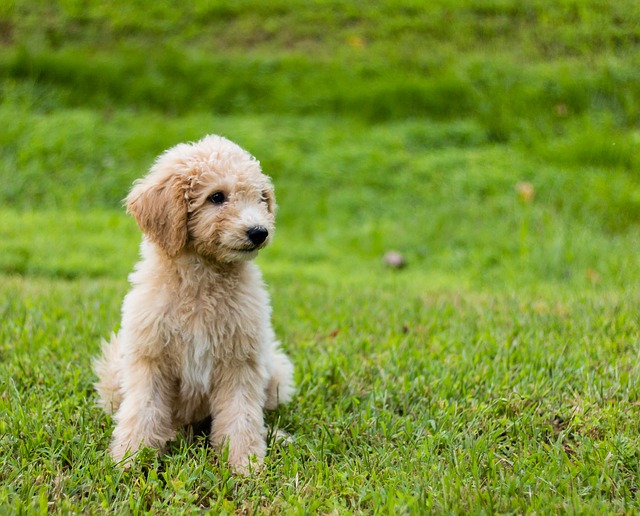
a. Size and Weight
As mentioned earlier, there’s an enormous variation in the weights and heights of Groodles. Standard-sized Groodles are over 21 inches in height and weigh about 50 pounds. Medium Groodles weigh between 35 and 50 pounds and stand between 14 and 17 inches. The Petite Goldendoodle is under 14 inches.
b. Eyes
Groodles may have any of a few eye colors, owing to their Poodle heritage. Most have brown or hazel eyes, but gray ones aren’t unknown.
c. Coat and Color
Because the Groodle has straight-haired and curly-haired parents, it can have a straight, curly, or wavy coat. A litter may have puppies with different coat types. Groodles come in a variety of colors, including apricot, cream, red, black, and grey.
5. Grooming a Groodle
How to groom a Groodle depends on the coat type it has. As you have learned from a previous section, a Groodle may have one of three hair types. Here’s how to get it to look its best.
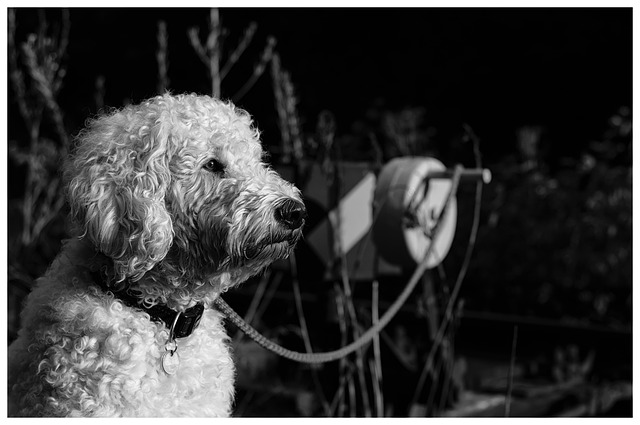
a. Coat types
Groodles can have one of three coat types. It can attribute this variety to its Poodle heritage. Its coat can be wavy, flat, or curly. Each of these hair types has distinct traits and requires a different grooming technique.
Fleece coats are wavy and feel soft when you touch them. These don’t need as much attention as curly coats. Dogs with this hair type tend to shed more than others.
A Groodle with tight curls like its Poodle parent will require regular brushing and dematting. A straight, Retriever-like coat will need constant combing.
b. Brushing
Determine your Groodle’s coat type before you brush it. Wavy coats require regular brushing with a slicker brush. A Greyhound comb works well with straight hair. Use a bristle brush for a curly coat.
c. Bathing
A Groodle needs washing about once a month. Remember to do this a warm room. Using a standard bathtub or shower is possible. There are hair products for dogs, but these tend to damage Its hair. You can use mild baby shampoo or one with a conditioner. If necessary, use of shampoo for killing fleas.
When bathing the dog, start by washing its face with a washcloth that’s free of soap. Don’t let shampoo get into your pet’s eyes. Work from the dog’s front to its back. Lather its neck, back, chest, belly, and legs.
Make bathing a pleasurable experience. The process will become much more comfortable for your Groodle and you. You may comb through your pet’s hair with a Greyhound comb while there is lather.
Rinse your dog. Make sure that there’s no shampoo as it may cause dry skin. Don’t rub the towel against the direction of the hair growth, as its hair may tangle.
Use a dryer to finish the process.
d. Clipping
Never shave your Groodle’s hair entirely. Leave about 11/2 to 2 inches. Use electric dog clippers, and make sure that they are sharp. A pair of scissors works well if clippers aren’t available. To get the classic Groodle look, trim your dog’s facial hair to look like an upside down V.
e. Ears
Spray your dog’s ears lightly with white vinegar. Never use a cotton swab. Use a cotton ball or washcloth to clean them instead. Dry the ears thoroughly.
f. Nail clipping
Nail clipping can be quite traumatic for a dog. It’s disastrous if a groomer into the quick(the pink area of the nail) because it will start to bleed profusely.
So, avoid doing this. If your dog hasn’t had its nails trimmed before, ease it into the process. Handle its paws gently and cut a little of them off at a time. Your pet will let you do this readily if it understands that it won’t get hurt.
6. House training a Groodle
House training a puppy, or any dog, is no mean feat. You’ll need tons of patience. Fortunately, the Groodle is relatively easy to train. Here’s what to do to make the process less arduous.
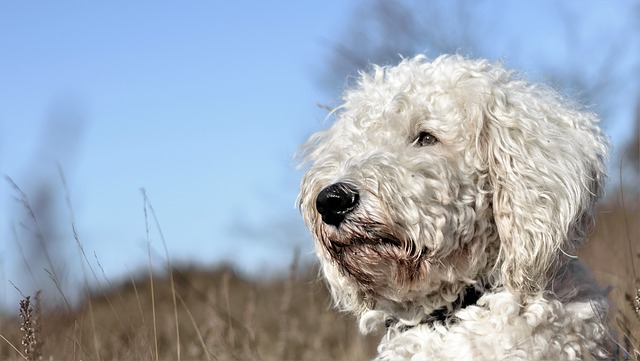
a. How long will it take to house train my Groodle?
Like babies, puppies can’t ease themselves on their own at first. They will need the help of their mothers, who will rub them gently to help them eliminate.
They can start to learn to use the potty when they are about four weeks old, but they can only do so much by themselves.
You can start putting them in a papered area at Week 5. Keep your expectations realistic; don’t expect a young dog like this to ease itself in the same area consistently. Put it on a tray during this time.
At Week 6, you can start taking the tray into your garden. Give it a ‘spot’ where it can eliminate.
b. Establishing a routine
First of all, set up a routine for your puppy. Puppies usually need to ease themselves when they get up, after their meals, and before they go to bed. Bring your dog out during these times.
c. Outdoor training
As said earlier, you can bring the tray outdoors. You may also choose not to do so. Whatever your choice, make sure that your puppy eliminates in the same spot during each potty session.
d. Crate training
This process may seem somewhat tiresome but will get your Groodle potty trained quickly. It works well if you get your pet to form positive associations with it. You’ll find a crate a blessing when you need to house your pet for any reason, be it a move or a trip to the vet.
To train your pet to use it, put a treat in it. Leave the door open. Your pet will go in by itself when it’s ready. Soon, the dog will go into the crate because it is home.
Make sure that it has sufficient space. It shouldn’t be too small or large. Your dog should be able to sit, stand, and turn around in it. Dogs are clean creatures; your pet won’t want to sleep in an area where it defecates. It will choose to ease itself in the corner of the crate if it’s too big.
e. Paper training
Paper training will be essential if you live in an apartment. You can get your Groodle to go in a particular area.
Lay your chosen area with newspaper and put your pet there when it’s potty time. Do this consistently. As your pet becomes accustomed to the spot, remove some paper. Your dog will know that the place is its bathroom.
f. Bells
Bells are an excellent reminder that it is time to ‘ go potty.’ Hang one in front of your pet’s crate or over the dog door if you have one. Make it a point to let your pet hit it with its paws when it is time to go. If you do this consistently, your Groodle will ring the bell itself.
7. Groodle temperament
The Groodle, being the offspring of the reticent, intelligent Poodle and the affable, smart Golden Retriever, has many desirable qualities. We list some of its characteristics, and those of its parents as well.
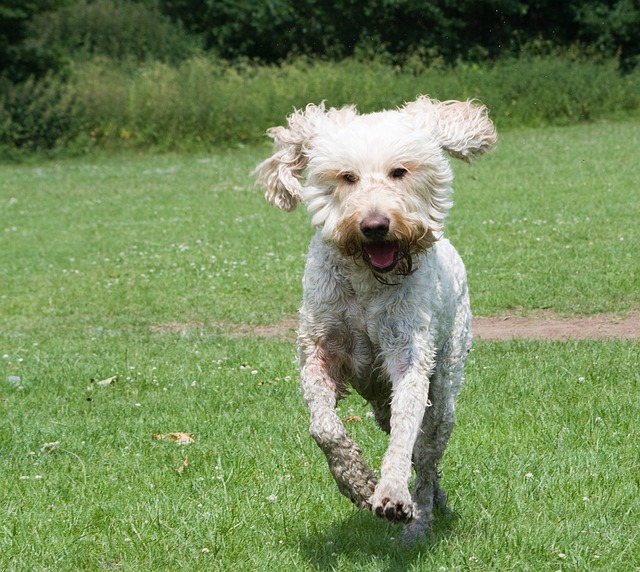
a. The Poodle
Ignore the Poodle’s show ring appearance because it may give you the wrong idea about this dog. A Poodle is more resilient than its outlook.
For a start, this fellow is one of the most intelligent dogs in the world. It ponders over instructions and learns so fast that it can anticipate your actions. It responds well to positive reinforcement.
Poodles need lots of mental stimulation. Games like hide and seek or fetching toys will excite it. It doesn’t matter which activity you choose, as long as you don’t ignore it.
Alert, the Poodle, will bark when there are strangers at the door and is reserved. It is calm and accepting of other people and pets.
This dog isn’t perfect. It needs constant companionship and may suffer from separation anxiety. The Poodle learns fast, and become so used to routines that it finds changes disturbing.
The Poodle is also hypersensitive. It isn’t great around small children because sudden sounds startle it. This gentle fellow doesn’t like roughhousing and is highly-strung. Also, it doesn’t relish conflict situations.
This dog has a reputation for some neurosis.It may get up to mischief if left alone for too long.
b. The Golden Retriever
The Goldie’s affable, constant smile says it all. This dog has one of the most even temperaments you’ll know.
The Goldie is the ultimate family dog – it’s cheerful, responsive, reliable, and friendly with everyone and every animal. It also forgives an owners shortcomings. It is remarkably eager to please.
You must consider that this fellow has a propensity to chew slippers and other objects. It barks, but its bark welcomes rather than protects.
This dog has a childlike innocence that lasts. While this is adorable, training is necessary to keep it calm.
c. Groodle Temperament
Groodles have parents with even temperaments, so its own can’t be far behind. This affability is what makes it popular.
Like the Golden Retriever, the Groodle loves company. It is loving, playful, and gentle. Many inherit the Goldie’s friendly expression. Early socialization will help it to get along with other people and pets.
Like the Goldie and Poodle, this fellow is extremely active. Welcome it into your home only if you have time to exercise it. It is a family pet that will follow you anywhere.
8. Breeding Groodles
Breeding puppies is an enormous undertaking, especially if they are cross breeds. You will have to think about the health of the parents and the litter. Finding homes for the puppies is another consideration.
So, what is the right way to go about this process? If you’re breeding Groodle puppies, you can use a few tips.
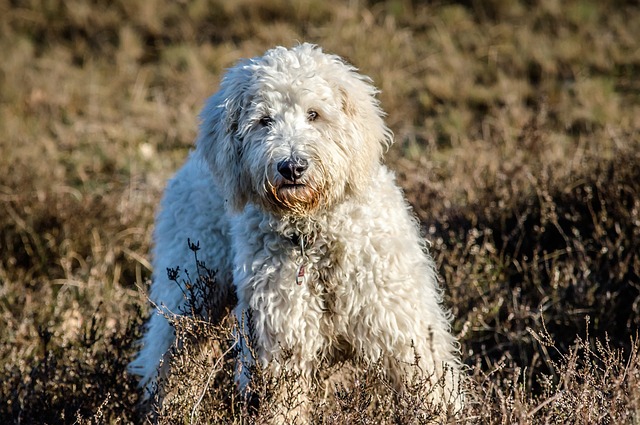
a. Education
First, find out all you can about the Groodle. Do some research on breed standards. The Groodle isn’t a recognized breed, but you can find out about the Golden Retriever and the Poodle. Having this information on hand will give you an idea of how Groodles are supposed to look and behave.
b. Choose a reliable breeder or breeding program
Responsible breeders won’t have dollar signs in their minds when breeding puppies. They put in a lot of effort into caring for and improving the health and quality of their litters. They cross and promote one litter at a time.
A breeder is usually someone who owns the dam. He or she will have the female evaluated before breeding begins, and won’t proceed if it has pre-existing medical conditions.
Furthermore, a responsible breeder will allow you to meet with the puppies and their parents. If he or she has bred the puppies using sound methods, he wouldn’t mind you assessing their temperament, conformation, and health.
Note that you should avoid buying your Groodle from a puppy mill. The conditions in puppy mills are usually unsanitary and cramped. The puppies they produce often have injuries.
c. Meet the parents
Then, it’s time for a doggie PTA session. Have a look at the litter’s parents. Evaluate them for health and behavioral conditions. Find out about their histories and backgrounds as well.
d. Implications of crossbreeding
Birthing can be stressful or even impossible if there is a mismatch in the parents’ sizes. A Golden Retriever is larger than the Poodle, so the process would be easier if it’s the mother. The Goldie will have less trouble pushing out the pups.
Remember that the Groodle is a new breed. So, its features haven’t stabilized. Groodles will look a little like Poodles and Golden Retrievers. Your puppy’s look depends on the parent it takes after.
e. Don’t rush
Don’t breed your female when it’s too young. Breed it only when it’s about two years old. It should have all its certifications.
Have your vet examine it thoroughly. He will conduct a progesterone test closer to the date to determine if your dam is ready to breed.
f. Have a backup
Choose a backup stud in case the one you’ve chosen can’t breed.
g. Contracts
Draft a contract that states the number of puppies each owner should have. Ask other breeders for samples of contracts that they have drafted.
h. Advertising
Begin advertising the availability of your puppies long before the breeding begins. Set up a website that provides essential details. You can also take out advertisements in newspapers or breed publications.
I. Maintaining health
Feed your dog quality dog food, and make sure that it exercises.
j. Whelping box
Make sure that you have enough space to breed your dog. There should be sanitary areas where the mother and her puppies can rest. The whelping box should contain a thermometer stethoscope, gloves, hemostat, syringe, charts, and a disinfectant.
k. Assistance
Have a person who has experience handling dogs on hand to help you. Ideally, that person should be able to be with you at a moment’s notice.
l. Extra cash
Have some money on hand in case of emergencies, such as trips to the vet.
m. Emergency numbers
Have numbers animal hospitals with you in case of an emergency.
9. Groodle health
Groodles are generally healthy but are predisposed to a few medical conditions. These are mostly those that trouble the Poodle and Goldie. Here is more information about these conditions.
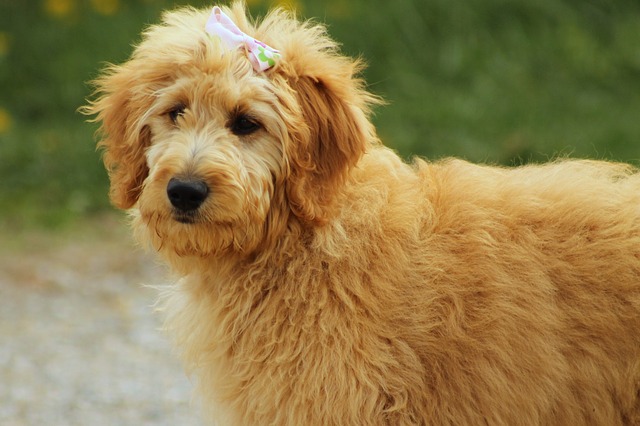
a. Allergic Dermatitis
First of all is allergic dermatitis. Substances in the environment cause allergic reactions, and therefore, itchiness.
b. Cataracts
A cataract is an opacity in one or both eyes. In its normal state, a dog’s lens is translucent. It transmits light onto the retina of the eye. A cataract blocks this transmission.
Cataracts have many causes, the most common of which are genetic. Their severity varies from one dog to another.
These also develop following some form of trauma to the eye. Diabetes and nutritional diseases accompanying puppyhood also cause cataracts.
Watch out for a blue, gray or white color change in your pet’s eyes. It will also bump into objects more often. Your dog may be reluctant to use stairs as well.
c. Corneal Dystrophy
Corneal dystrophy is a malfunctioning of the inner layer of the cornea. This layer keeps it dry and transfers fluid from the cornea to the eye’s front chamber.
Watch for a change in eye color. Corneal dystrophy causes water retention in the eye. It may also result in ulceration and inflammation. The dog will squint and tear.
d. Ruptured Cranial Cruciate
The Cranial Cruciate Ligament or Anterior Cruciate Ligament (ACL) stabilizes the femur or thighbone. It may rupture because of a gradual breakdown. Your dog may experience a sudden onset of lameness, and its hind limb may weaken.
Watch out for lameness or a sudden inability to walk. Your Groodle will benefit from surgery if it’s large, as the procedure will stabilize the femur. Your vet may place implants within the knee joints.
e. Canine Degenerative Myelopathy
This condition refers to a progressive degradation of the spinal cord. It is common in large dog breeds. The spinal cord usually deteriorates within half a year. It happens when the immune system attacks the nerve cells.
If your Groodle has this condition, its hind limbs may be weak. It will drag its nails and find it difficult to get up. It may stumble. There will be muscle loss as well. Incontinence is also common.
Vets will prescribe a host of vitamins and a special homemade diet. They may also recommend physical therapy.
If your vet has diagnosed your dog with this condition, he may suggest surgery. Monitor your pet’s surgical wound, and keep it calm when it’s at home. It may have to take anti-inflammatory medication.
f. Diabetes Mellitus
As we all know, this condition refers to the malfunction of the hormone, insulin. There’s usually something that interferes with the body’s ability to process it.
A diabetic dog will experience increased thirst. It will urinate more often and have weight loss. Sudden blindness is common. The dog may be increasingly tired.
Your vet will recommend insulin injections to control the blood glucose. He may also advise weight management.
g. Canine Distichiasis
Canine Distichiasis refers to the growth of extra eyelashes. Ladies, don’t envy your pet for this because it doesn’t enhance its appearance. In fact, this condition causes pain; the lashes rub on the cornea and irritate it.
Watch out for the accumulation of blood vessels in the cornea. Pigmentation may develop within it as well. Your pet may experience conjunctivitis and start squinting.
Depending on the severity of the condition, your veterinarian may recommend corrective surgery or an ophthalmic lubricant.
10. Groodle nutrition
a. What is a quality dog food?
The first thing that you need to know about dogs’ diets is that they do not require only meat.
Dogs are omnivores, which means that they don’t just require meat. They need healthy amounts of ’glow’ foods – vegetables – as well.
Meat should be the main ingredient in dog food. But it should also contain fibers, minerals, and vitamins.
b. Consider everything about your dog’s development
Your dog’s nutritional needs depend on factors like it’s growth, health, and reproductive needs. Its age is another consideration. Growing puppies need protein, as do lactating mothers. Taking these factors into account will help you choose the best food for your Groodle.
Remember that your pet will have calorie needs. Goldendoodles vary in size; the larger they are, the more energy they need. They require about 600 calories per day on average. These should come from different nutrients. Don’t get food that contains only proteins or carbohydrates.
c. Check the ingredients list
A quality dog food should have grains and vegetables, but its first ingredient should be meat.
Whole meats are healthy and more appealing but contain less protein than meat meals. They have a high percentage of water. When looking over the ingredients, consider if your pet has a dietary need.
d. Canned or Dry
You’ll also want to consider if your pet would benefit from canned or dry food.
Canned food has 75% water, and needs refrigeration. It’d easier to store than canned food but harder to digest. You will probably need a mix of both.
e. Check the proximate label
This label will tell you how much of each ingredient the food contains. It’s not easy for manufacturers to produce food to suit specific needs. However, it will give you an idea of which one suits your pet best.
f. Buy a fresh package
Like all food products, dog food doesn’t have an eternal shelf life. Make sure that you get a fresh pack. Stores will want to sell their old packages first, so they’ll place them in front. Reach for the bags or cans at the back.
g. Storage
Storing food well is essential because you won’t want it to spoil. Keep dry food in its original packaging. Place it in a cool, dry place like your pantry.
Keep canned food there as well. Try not to have open cans as far as possible, but if it isn’t, cover it with a plastic wrap.
11. Obedience training for Groodles
Groodles are smart and love obedience training. It’s not difficult to get your Groodle to obey basic commands, but there are a few pointers to remember.
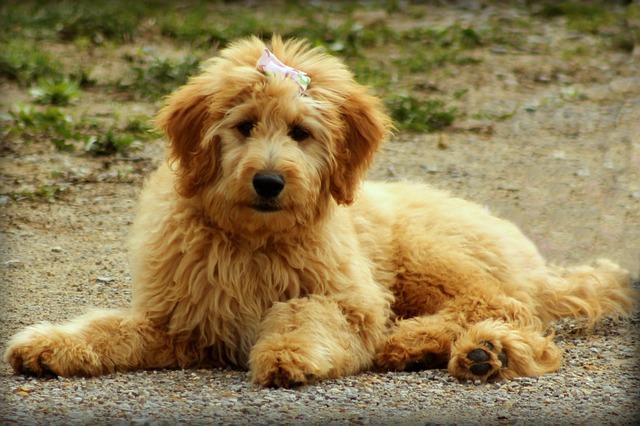
a. Tips for Training a Goldendoodle:
First, consistency is the key to successful training. Use the same word when giving your pet commands, and get your family members to use the same ones.
Say your pet’s name when praising it. Use it along with your commands. Don’t say it with a scolding, as you want to teach your pet that it will hear its name if it does the right actions.
Use praise liberally. Groodles work more for affection than food. Give it as many belly rubs as you can. Pat its head while calling it a ‘good boy’ or ‘good girl.’
Keep training sessions short and pleasant. When training becomes frustrating, return to it later.
Don’t give your Groodle lots of attention when it misbehaves. Doing so will reinforce its negative behavior.
b. The ‘Sit’ Command
This command is the first that all dogs should master. It keeps your pet safe in dangerous situations.
First, hold a treat and let your Groodle smell it. Move your hand up. Its head will follow the goodie, and its bottom will lower. Once it is in this position, give it the treat.
c. Come
This instruction keeps a dog out of trouble as well. It is helpful when your dog runs away from you.
Leash your pet. Go down to its level and say ‘come.’ Pull on the leash gently. Give it affection when it comes to you.
d. Down
This instruction will be challenging for your Groodle to master because it puts your pet in a submissive position. Your Groodle will learn it if you keep training sessions positive.
Grab your pet’s favorite treat. Hold it in a closed fist, and bring it up to your dog’s nose. Your dog will sniff the treat. Move your hand down to the floor, and it will follow.
Say ‘down’ when it is in this position. Once it assumes this posture, give it the treat.
e. Stay
This command also keeps your pet in place when necessary. Your pet must have mastered the ‘sit’ command.
Get your Groodle to sit. Then, open your palm in front of you and say ‘stay.’
Move backward slightly. Reward your pet if it doesn’t follow you.
f. Watch me
Of course, your pet must observe you and ignore distractions.
Teach your Groodle the command, “Watch Me.” Maintain eye contact with your pet while holding a treat. Move your hand from the dog’s nose up to your face. As it watches you, say ‘watch me.’ Repeat this until your pet does so automatically.
g. Off
You’ll want your Groodle to understand that it should leave your belongings alone.
To teach the ‘Off” command, grab a treat in both closed hands. Put one near your dog’s face, and let it smell the treat.
Your dog can’t access the treat. It will back off eventually. Open your hand, offer it the goodie and say ‘off.’
12. Managing annoying Groodle Behaviors
A Groodle is an even-tempered, friendly pet. Its smile never fades. That said, it is prone to annoying behaviors. Here are a few that you may have to manage.
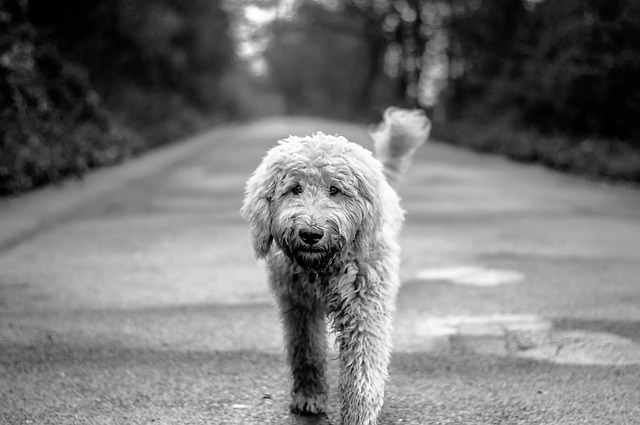
a. Chewing
First, Groodles have a propensity to chew, especially if left alone for too long.
Substitution is the key to managing this behavior. Replace the item it nips with a safe chew toy.
b. Chasing
Managing this behavior is essential because it exposes your pet to danger. It may injure itself if it chases a car down the street.
Your dog should know how to ‘sit,’ ‘stay,’ and ‘come.’ Use these commands when your sense that your pet is about to run. You can also provide your pet with plenty of opportunities to chase other dogs at dog parks.
c. Barking
You don’t want an irate neighbor banging on your door because your pet has ‘talked’ too much. To control barking, clasp your dog’s muzzle gently and say ‘no speak.’ It will learn that barking gets this negative response. Don’t shout because your pet will think that you are joining him in his conversation.
d. Jumping
Jumping is a dog’s way of telling you that it feels thrilled to see you. While this behavior is heartwarming and adorable, it can frighten guests.
You don’t want to punish your pet, but you do want it to learn that jumping is not acceptable. Ignore your pet when it jumps. Stay calm and assertive. Once your pet stops jumping, you can show it a bit of affection.
e. Digging
Dogs and digging are like what earth is to plants. One can’t do without the other.
Of course, you don’t want to see holes in your garden after a long day of work. Seclude your pet in an area of your yard where you won’t mind a few holes and give it a sandbox where it can dig.
f. Gulping
Your pet may gulp because it used to fight with its littermates for its mother’s milk. There are bowls specially designed to prevent pets from overeating. You can get one of these for your Groodle.
g. Nipping
Puppies nip as a sign that they want to play. The problem with this behavior, adorable as it seems, is that it may lead to actual biting and aggression.
To stop your Groodle from nipping, let out a yelp. Then, remove yourself from the situation. Ignore your pup until it learns that nipping is unacceptable.
h Aggression
Dogs work hard to protect their humans and may become overenthusiastic about their task. Dog handlers are in the best position to manage aggression; however, you can prevent it by not putting your pet in conflict situations.
i. Separation anxiety
Being left alone for too long can take its toll on a dog. It may bark, chew, or dig.
Help your Groodle overcome its separation anxiety. Don’t leave your home for too long. Gradually extend the amount of time you spend away from your pet. Say goodbye quietly, but don’t make a fuss. Your pet won’t worry that you’re abandoning it.
13. Games to play with your Groodle
A dog wants to have fun and lots of it. This statement rings especially true for a Groodle. It’s probably the most fun-loving dog on the planet. Here are a few games to keep it entertained.
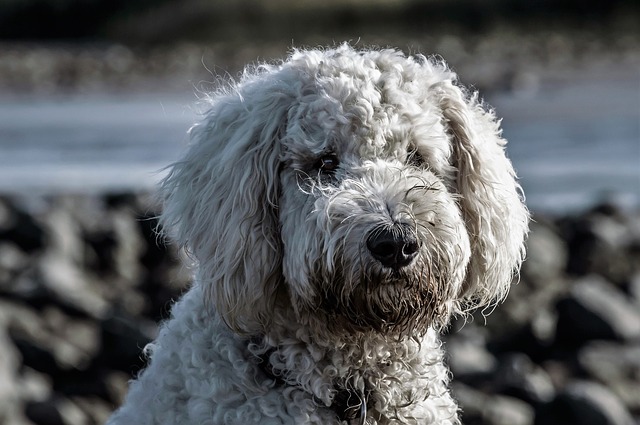
a. Tug of War
The first game on this list is Tug of War. Non-enthusiasts say that it promotes aggression, but this won’t happen if you play the safe way.
Furthermore, Tug of War is a good chance for you to teach your pet what it can chew, and what it should leave alone.
Teach your pet to ‘drop it.’ It may take a while for your pet to respond, so exercise patience. If it drops the item on its own, reward it.
b. Hide and Seek
You can play this game with people, toys, or treats. Have someone hold your Groodle while you hide its favorite toys. When you are ready, call your pet and get it to find the items. It gets to keep these as rewards.
c. Fetch
This game is a classic, and always motivates dogs. Throw the item, and get them to run after the toy. Run alongside it if it doesn’t do so itself. Call it back to you and when it returns, reward it with a treat.
d. Water games
This game will work well if you have a garden. A sprinkler is an excellent way to get your Groodle used to the water.
Water games will make bathing a less stressful experience. Get your dog to chase toys through sprinklers. You may introduce it to a kid’s pool if you have one but make sure that there isn’t too much water in it.
e. Learning names of objects
You can play this game with your dog by yourself or with others. Playing it with others, of course, is more fun.
Seat yourselves in a circle and have your puppy stay in the middle. Say the name of a person who’s sitting down. That person should call your pup as it approaches. Repeat this with the names of others in the group. Your dog will eventually learn everyone’s names.
In conclusion, you can turn the Groodle from an ‘almost perfect’ into an ‘ideal’ family pet. Knowing how to groom, feed, and train it is part of this process. It’s also wise to find out as much as you can about this crossbreed as well.
